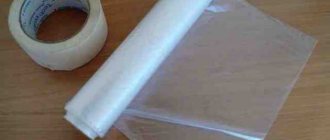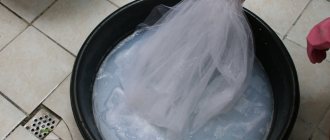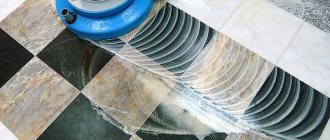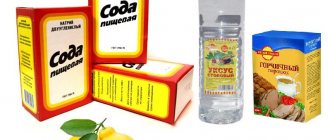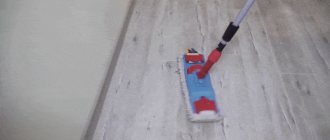According to statistics, up to 50 kg of dust accumulates in a typical apartment in 1 year. Its particles settle on all surfaces and eventually form balls in the corners. With irregular cleaning of upholstered furniture, textiles and even paper books, dust mites appear, which provoke allergic reactions and bronchial asthma. A dirty room is a source of spread of dangerous microorganisms. Street dust contains microparticles of heavy metals and chemical compounds. Accumulating in the body, these substances increase the risk of serious diseases.
To prevent such problems, it is not enough to periodically wipe the dust in the apartment. To maintain cleanliness you need an integrated approach using special products.
What is dust
Sooner or later everything turns to dust.
Dust is microscopic particles of earth, dead human skin, paper and other decaying things. The size of one speck of dust does not exceed 0.05 mm.
Street dust contains pollen, exhaust gases, and toxic substances that are released into the air by large factories. Dust mites love to live in house dust. It can also be construction, atmospheric and industrial (for example, grain), of natural or artificial origin.
Why is it dangerous?
The sizes of dust particles are determined within the range from 0.00002 to 0.1 millimeters. Above forests, rivers, and lakes, its content does not exceed 1 milligram per cubic meter. In cities, dust levels can reach 20 milligrams per cubic meter. The structure of dust in an apartment/house primarily depends on finishing materials, service life and quality of furniture and household appliances.
The most common harm caused by household dust is allergies, which affect every tenth city resident. It is often confused with the common cold due to the similarity of symptoms. Allergies can result in bronchial asthma.
Dust allergies are primarily caused by saprophytic mites, insects up to 0.5 millimeters in size. In 1 gram of house dust there are up to 500 individuals that process organic dust components. Their waste product is guanine, an allergen that causes runny nose, conjunctivitis and asthma. In a city apartment, a person inhales 25 times more dust particles per minute than outside the city. Cleanliness in the house for city residents is important for maintaining health.
See also
Composition of Japanese cleaning wipes without chemicals and rules for using them at home
Causes of dust and where it is most common
Many people think that dust enters the house from the street - it flies into open windows, or is carried on shoes. Scientists have refuted this myth. They conducted an experiment: they closed the room for 2 weeks and assessed the amount of dust generated. For 1 sq. centimeter, about 12 thousand dust particles settled. They went further and studied their composition. A third were mineral particles, 19% were leather particles, and 12% were disintegrated paper and textiles.
Dust particles settle on horizontal planes, most of all on rough and fleecy surfaces - carpets, soft toys, clothes, upholstered furniture.
Dry air
In winter, when heating appliances are running, things break down faster. They promote the evaporation of moisture from the air, paper, clothing, and dirt on shoes. Dust rises into the air and settles poorly. It becomes difficult to remove it.
Organize your closet
Modern closets without doors and floor racks for storing clothes are extremely unhygienic. They attract dust. The effect is almost the same as when storing things on the back of a chair or simply scattered around the room. The least amount of dust is in a tightly closed closet, in which clean, washed clothes are folded in tight piles.
Too many textiles
Apartments and houses are overflowing with textiles: curtains, upholstered furniture, carpets, towels, bed linen, clothes. They not only attract dust, but are also sources of it themselves. Especially a lot of dust particles are generated from natural fabrics. Synthetics break down more slowly, but their particles are much more dangerous.
Storing books and magazines
Paper disintegrates the fastest. Therefore, any paper publications, be they books, newspapers, magazines or notebooks, should be stored in a glass cabinet or a locked drawer. To store large volumes, you can use a thick plastic bag.
We recommend: How to clean silverware and jewelry at home
How to stop dust from appearing so quickly
Despite the constant improvement of household appliances and chemicals, there is no way to get rid of dust once and for all. However, any housewife can make it smaller.
Helpful Tips:
- install a modern ventilation system in the home;
- ventilate the premises even in winter;
- Place mosquito nets on the windows; in summer you can cover them with damp gauze to trap dust;
- Buy an air humidifier and be sure to use it during the heating season. You can add aromatic oils or anti-tick medications to this device;
- Store books and small items in cabinets behind glass;
- get rid of unnecessary things that collect dust: old clothes, soft toys;
- do wet cleaning once a day, in the nursery twice a day;
- change bed linen once a week, wash it at a temperature of 60-90°C and be sure to iron it with a hot iron;
- remove carpets from walls and floors;
- replace feather pillows with synthetic ones;
- put flowers that absorb dust: dracaena, chlorophytum;
- beat out pillows and blankets once a month, “fry” them in the sun in the summer, and keep them in the cold for 8-12 hours in the winter;
- wash blankets and curtains at least once every 2 months;
- control the temperature and humidity in the room. Optimal values are 18-22°C at 60-70% humidity.
House dust is not as harmless as it might seem at first glance. Every day a person inhales polluted air, which contains organic and mineral particles, dangerous parasites and bacteria. Regular cleaning, humidification and ventilation of the home will help to minimize this harmful effect.
Dust removal methods
Dust surrounds a person everywhere. It must be removed comprehensively. There are different ways to deal with it:
- Wet cleaning. Dust particles are easily washed off with water. This is the most affordable and effective way to remove dust. In addition to cleanliness, it saturates the air with moisture.
- Vacuum cleaning. Allows you to remove dust particles from upholstered furniture, textiles, carpets, mattresses and pillows. The vacuum cleaner does not redistribute the dust, as happens when cleaning with a broom, but sucks all of it into the bag.
- Regular washing. It is important to regularly wash curtains, bed linen, and dirty clothes. Even if home textiles look clean, a significant amount of dust particles accumulate in them over several weeks.
Construction dust
After repairs, dust must first be removed with a construction vacuum cleaner. Household models can become clogged or broken due to construction dust. It is important to clean up after each stage of work and not accumulate dirt. A large amount of dust is removed in several approaches. You can spray water from a spray bottle into the air and moisten the floor. Flying dust will settle on horizontal surfaces.
How to wipe furniture to prevent dust from settling
Household chemicals
- Polishes.
Special liquids for cleaning glossy surfaces that do not leave streaks or stains (Pronto, Mebelux). The product adds shine to surfaces, destroys bacteria and leaves an invisible film that repels dust.
- Sprays for cleaning TV and computer screens.
Absolutely safe for equipment, dry instantly. It is recommended to apply them to a special cloth and only then wipe the screen with it.
- Sprays that destroy household mites and neutralize most allergens.
A good example is Allergoff - the product is applied to carpets, upholstered furniture and toys. The spray works for 6 months after spraying.
All products are safe for humans and the environment.
Folk remedies for cleaning an apartment
Supporters of natural remedies can use popular tips when cleaning a room:
- a mixture of any vegetable oil and lemon juice in equal proportions will replace polish;
- warm water with the addition of laundry soap shavings will replace special products for wet cleaning;
- a liter of water with a dissolved spoon of ammonia - an analogue of glass washing liquids;
- baking soda, sprinkled on the carpets in a thin layer, will clean all dirt from the carpets without effort. Simply vacuum the surface after a few hours.
Tools and rags
You can remove dust with a regular rag, mop, or vacuum cleaner. But it is much more effective to deal with it using a special tool.
- Pipidastra (panicle). The multi-colored down stick was heavily criticized at one time. Allegedly, she only brushes off specks of dust. In fact, it is a very effective tool if you know how to use it correctly. The pipidastra needs to be electrified by placing it in a plastic bag and rubbing it. The dust particles will be attracted to it themselves. After cleaning, they need to be washed off with water.
- Electric brush. It is an improved pipidastra. The built-in motor rotates the broom, and it collects even more dust.
- Beater. Helps clean carpets and mattresses. Knocking out must be done outside.
- Microfiber cloth. Synthetic fabric absorbs fine dirt well and avoids streaks. The rag should be slightly moistened and the furniture should be wiped with a light movement.
"Dust collectors" in our apartments
In order to know how to deal with dust, it is important to understand where it comes from in our homes. Its quantity in the apartment also depends on the interior . There are certain things that literally attract little gray particles that are hard to remove.
By examining the project, where the dust comes from and what danger it poses, we can state that its main sources are:
- Carpets. The fibers on your carpet attract a large amount of dust every day. Thus, in order to maintain relative cleanliness in the apartment, you will have to vacuum the surfaces daily and frequently wet-clean the carpet.
- Accumulation of rubbish. How much dust is collected by all kinds of boxes and suitcases that lie in closets and on mezzanines for many years! And also things that are not often used by the owners, but are in the most visible place. The fight against dust deposits must begin with just such “burials”, throwing out everything superfluous and unnecessary, and what you use occasionally must be put into boxes and taken out from there as needed.
- Collectibles are the perfect dust collector. These include items standing on the shelf: figurines, models of cars or sailboats, plush toys. To protect yourself from the need to constantly clean your collection, the best option is to store it behind glass.
- Curtains made of thick fabrics and canopies. These are interior items that, like a magnet, attract dust particles and small debris. It is best to change them to light tulle or blinds.
- Radiators. A large number of particles enter the home through windows and settle on the batteries.
All of the listed interior elements contribute to the accumulation of a lot of dust in the home, which is not so easy to get rid of.
How to get rid of dust in an apartment using special means
Special anti-dust products include antistatic agents for upholstered furniture and polishes for hard surfaces.
Antistatic components are included in many modern products for cleaning floors, mirrors, and windows. They prevent the treated surfaces from becoming electrified, and dust practically does not stick to them and slides off. Items stay clean longer. The other side of the coin is that it settles on unprocessed objects or simply floats in the air. There may be an unpleasant odor in the house.
Advice. A special dust remover is best used as an addition to air purifying devices.
Algorithm for proper house cleaning
Each housewife cleans the house according to a certain scheme, and dust settles on already cleaned surfaces. To make the process as efficient as possible and save some time, you can use a proven algorithm based on simple physics:
- you need to start from the top so that dust and dirt fall on things that have not yet been processed;
- it is advisable to move in a circle, starting and finishing cleaning at a window or door;
- the floor in the room is vacuumed and washed last;
- Cleaning begins from the back rooms and gradually moves towards the entrance to the home.
- The hallway is cleaned last, so as not to bring dust and dirt into the clean rooms.
Folk recipes
You can replace furniture antistatic agent with a simple fabric softener. People have come up with many recipes for fighting dust:
- To remove flying dust, you need to turn on the air conditioner and fan at the same time.
- To prevent stains from appearing on hard furniture, add 150 ml of vinegar to 1 liter of water.
- To clean hard-to-reach places, attach double-sided tape to the mop.
- Use old terry socks instead of a special rag.
- You can clean a sofa or mattress by covering it with a damp sheet and tapping it with a beater.
We recommend: Grass for animals without peat and chemicals
Dust control methods
To get rid of dust in an apartment, cleaning alone is not enough; this matter requires an integrated approach. Let's consider all the methods in detail.
Removing rubble
Above we described what most often becomes places where dust accumulates. When starting cleaning, you first need to deal with the following rubble:
- Put figurines, vases and other trinkets in cabinets with glass doors. Place excess decor in bags and hide in the pantry;
- throw away old magazines and newspapers. Collect the publications you want to keep in boxes and put them in the storage room. It is better to keep books behind glass in a closet;
- collect seasonal items and shoes that you do not use, put them in boxes or covers and hide them in a closet;
- to get rid of dust in the apartment, reduce the amount of textiles in the interior (carpets, rugs, etc.). If you are not ready for this, prepare yourself for frequent cleaning. Do not forget to regularly wash, vacuum or steam curtains, upholstered furniture and fabric lampshades;
- clear out all the clutter in closets and closets. Store rarely used items in bags, cases and boxes.
If you cannot give up carpets and rugs, put them in the pantry at least during the warm season, when they are not particularly needed
When putting away interior items for storage, do not forget to wipe them from dust. Things and clothes must first be washed or shaken out, shoes must be washed and dried.
Proper cleaning
To get rid of dust in the apartment for a long time, after removing the rubble, carry out a general cleaning. To begin, thoroughly vacuum the floors so that during the cleaning process you do not raise or spread dust over all surfaces.
Use a vacuum cleaner to remove cobwebs from the ceiling and upper corners, lift sofas and armchairs, and go through all hard-to-reach areas
Then proceed to empty all textile dust bins:
- wash, vacuum or steam curtains, carpets, rugs, toys, etc.;
- beat out the mattress, pillows and blankets outdoors. Prepare bed linen for change;
- clean upholstered furniture.
After processing textiles, remove dust from top and hard-to-reach surfaces. Dust is removed from top to bottom so that the swept particles do not settle on already cleaned objects.
If you have suspended or suspended ceilings, be sure to wipe them down. How best to do this, read this article
Wipe down cornices, doorways, niches and decorative structures
Wash the windows or at least wipe them from the inside. Don't forget about the window sills
Wash the ventilation grilles
Clean the air conditioner filter and wipe down the equipment itself
Wipe dust from chandeliers, lamps and lampshades
Wipe the kitchen unit and hood
Collect dust from the walls and tops of cabinets
Wipe down mirrors, picture and photo frames, and all wall decor
Wipe the plants with a damp sponge. If the dust is difficult to handle by hand, take the pot to the bathroom and gently rinse the foliage in the shower. Most plants love this procedure
Remove dust from sockets, switches and door handles
Wipe the TV, speakers, kitchen and other appliances (it is advisable to use special sprays for them)
Wipe down the rest of the furniture: cabinets and chests of drawers, sofa arms, headboards, tables, chairs, shelves, etc.
After you have collected dust from all interior items, start cleaning the floor: it needs to be vacuumed and washed again. You can familiarize yourself with floor cleaning methods in our article “How to properly wash floors.”
Carpets are the biggest dust collectors. They need to be vacuumed 1-2 times a week, knocked out and cleaned regularly
Useful tips
To get rid of dust in your apartment, use the right equipment.
Use household chemicals with an antistatic effect: window cleaner, furniture polish, floor cleaning liquid. They reduce the ability of objects to accumulate static electricity and attract dust. There are hypoallergenic and unscented products on sale.
Use antistatic dust brooms (including electric ones). They neutralize static charge and attract dust to the fibers
Buy a microfiber cloth. This fabric collects and holds dust, but with a piece of an old T-shirt you will only brush away the dust, not remove it
Carry out light wet cleaning once every 2 days: wipe the floors in the kitchen, hallway and bathroom
To clean upholstered furniture, cover it with a damp sheet and knock it out: deeply embedded dust will settle on the damp cloth. Then the furniture can be vacuumed and treated with a steamer.
Dust from books can be removed with a vacuum cleaner using a special soft brush attachment, and then wiped with a slightly damp cloth.
Blinds can be cleaned of dust without removing them from the windows. Turn the plates so that they become a single sheet and go over them with a vacuum cleaner and a damp cloth. If heavily soiled, wash the blinds in the bathroom. Read more about this in this article.
Wallpaper also needs to be cleaned from time to time to prevent dust from accumulating on the walls. Almost all modern types of wall decor can be wet cleaned. Vacuum them before processing to avoid messy streaks.
Folk remedies and advice
To get rid of dust in your apartment, use the advice of experienced housewives:
- dampen a rag in water with the addition of potassium permanganate or a drop of detergent (dishing liquid, shampoo). After such treatment, an invisible film is formed on the surface of the furniture, which will prevent dust from settling;
- get chlorophytum. This plant is easy to care for and significantly reduces the amount of dust;
- To vacuum upholstery, wrap the vacuum cleaner nozzle with gauze soaked in a saline solution (dilute 1 tablespoon of salt in 1 liter of water; hold the cloth for 10 minutes and wring out well).
Air purification
To make dust control more effective, use special devices:
- air humidifiers (ultrasonic, steam, etc.). In dry air, microscopic dust particles can hang for a very long time;
- air purifiers (carbon, quartz, etc.) They rid the air of dust and harmful impurities;
- air washing. The device sucks in air, passes it through a filter and releases it out already cleaned and humidified;
- ionizers. Under the influence of ions, dust particles become heavier and settle, making them easier to remove;
- vacuum cleaner with aqua filter. Such devices trap up to 99% of dust and humidify the air.
Choose disposable vacuum cleaner bags rather than reusable cloth dust bags
Additional measures
You won’t be able to get rid of dust in your apartment forever, but you can reduce the amount of dust if you take a number of measures:
- install window membranes or mosquito nets. They prevent dust from entering from the street;
- eliminate cracks on doors and windows using sealant;
- use pillows and blankets with synthetic fill (it produces less dust than feathers and down and is easier to clean);
- replace curtains with drapery with simpler options or blinds;
- take care of good ventilation of your home. Ventilate the premises regularly;
- change or wash filters of appliances (air conditioner, vacuum cleaner, ventilation, hood, etc.) more often.
Modern devices
The long and tedious struggle with constantly generated dust is a thing of the past. Today technology effectively combats it. While the housewife is resting or at work, the machines are kept clean.
Humidifiers
By humidifying the air, the process of dust formation slows down. Not only things, but also hair and human skin are destroyed less. In addition, humidifiers help it settle out of the air. Dust particles bound by moisture fall onto horizontal surfaces, where they can be easily and quickly removed.
Robot vacuum cleaner
Many people treat robot vacuum cleaners almost like family members. They work tirelessly - sucking up dust and debris and animal hair from the floor. The equipment is compact and almost silent. With it, you can put off general cleaning of the house for as long as possible.
Air purifier
It is a device that sucks in air and forces it through built-in filters. Dirty and dusty air turns into fresh air without any human intervention. Additionally, the purifier fights bacteria, allergens and unpleasant odors in the room.
Supply ventilation system
This is by far the best device for dealing with dust. The equipment purifies and heats air from the street. With a supply ventilation system (breather), there is no need for ventilation, and accordingly, street dust does not enter the house. You can turn on the recirculation mode, and the device will purify the indoor air. Breathers have filters against the smallest dust particles, harmful gases and allergens.
Do you know the best way to clean a dressing room?
Dressing rooms are becoming popular even in ordinary apartments. The reason is the convenience of such premises: it is possible to put everything “in the full sense of the word” on shelves, but at the same time the open space allows you to quickly find the desired thing, shoes. Dream: you get up in the morning, take a shower, drink your favorite coffee.
You enter the “magic room” and dress to conquer the heights of business, study, and just feel comfortable. But the conditions in such a room must be maintained special, including ideal cleanliness. Professional cleaning can help you with this. You can order it cheaply on our website. Ah, now we will tell you some secrets.
Dressing rooms “unload” housing
In the past, spacious walls solved the problem of storing things. But at the same time, bulky structures “stole” the living space and it was necessary to clearly remember in which drawer the necessary things were located. Unlike the previous option, dressing rooms help to combine closet capacity and ease of access to things.
Thus, the living room can delight with free space, the hallway will not be overloaded with drawers and wardrobes. And you will frantically search for the necessary blouse, dress, shirt, suit and shoes that will match them.
What will help keep your clothes and shoes room tidy?
Let's decide what is a comfortable “living space” for a full range of wardrobe: fur coats, winter coats, light sundresses, leather clothes, shoes, underwear? Several indicators:
- Optimal humidity.
- No dust.
- Good ventilation.
- Moth protection.
To minimize the entry of dust, the door to the dressing room should always be closed. There is no place in the dressing room for a basket with dirty laundry (you won’t be able to get rid of odors).
An interesting feature of maintaining order in such a room is synthesis: cleaning rooms and closets. From now on, let's look at it in more detail.
- It is necessary to regularly wipe the internal surfaces of the shelves.
- Put only clean laundry on the shelves, in this case there will be less dust.
- Store fur coats in special bags.
- Carry out wet cleaning, after which it is good to ventilate the room.
Think about "helpers"
You cannot do without detergents and cleaning equipment. In this case, it is necessary to choose gentle detergents for chrome shelves. Clean wooden surfaces with microfiber cloths and alcohol-based chemicals (on the one hand it dries quickly, on the other hand it kills excess odors).
It is advisable to use steam generators that destroy harmful bacteria, help get rid of dust, mold, odors and do not spoil the shelves and finishing materials of the dressing room.
How and where to wipe off dust
First of all, horizontal surfaces are wiped: cabinets, hard and upholstered furniture, window sills, curtain moldings.
Correctly remove dust from top to bottom.
Lastly, wipe the floor and baseboards. It is important not to ignore hard-to-reach places:
- space behind and under furniture;
- niches in the walls;
- ceiling;
- hanging shelves and racks.
Shoe cabinets, carpets and hallways require especially frequent cleaning.
Library care
A home library is the pride of many families. A kind of “soul” of the house. In order for the library to please you and your family for decades and bring benefits to the reader, books must be looked after and used carefully. Books are not only a source of knowledge, but also a source of dust. Caring for books includes: careful reading, storage and restoration. Choosing the right storage location for a library is the key not only to its longevity, but also to the health of the reader.
First of all, books need to be sorted into groups: by author, genres requiring restoration, volume sizes. This will make finding the book you need much easier. If a book is not needed or you do not plan to read it, do not rush to throw it away; it is better to give it to your local library. They are always happy to add to their book repertoire. A book you don't need will serve many more readers. Instances that require minor repairs can be dealt with later, when there is time.
Secret ingredients
First of all, you need to wash your windows as you usually do. Just don’t try too hard, because this is just the beginning. For the next stage you will need to prepare a special composition. To do this, pour a liter of warm water into a bucket or basin. You need to add a spoonful of glycerin and a spoonful of hydrogen peroxide to it. The resulting solution must be mixed thoroughly. After this, add several crystals of potassium permanganate to it. Next, gradually stir the contents of the container until the crystals are completely dissolved.


